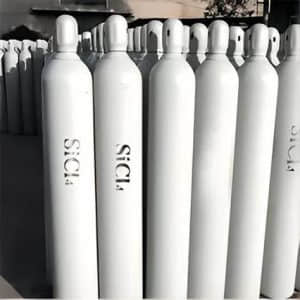Introduction
Silicon tetrachloride (SiCl4) stands as a crucial compound in various industries, especially in semiconductor manufacturing, chemical synthesis, and materials science. The purity of SiCl4 significantly impacts its functionality in these applications. When sourcing SiCl4 from suppliers, understanding the available purity levels becomes pivotal for ensuring optimal performance in specific applications.

Overview of Silicon Tetrachloride Purity Levels
Purity, in the context of chemical compounds like SiCl4, refers to the absence of impurities or contaminants. The purity of SiCl4 is typically categorized into different grades, often indicated as a percentage. Common purity grades range from 99% to 99.9999%, with higher percentages denoting greater purity.
Industry standards or specifications play a crucial role in defining acceptable purity levels for SiCl4. For instance, in the semiconductor industry, SiCl4 with extremely high purity levels is essential to prevent contamination during the production of silicon wafers used in electronic devices.
Factors Influencing Purity Levels
The purity of Silicon Tetrachloride is influenced by several factors, including the manufacturing process and quality control measures implemented during production. Different manufacturing techniques may result in varying purity levels, with some processes more adept at removing impurities than others.
Quality control measures, such as distillation, filtration, and purification techniques, are employed to enhance purity. However, the presence of impurities, albeit in trace amounts, is common in SiCl4 due to its reactive nature, necessitating stringent purification methods.
Importance of Purity Levels in Applications
The significance of purity levels in SiCl4 cannot be overstated, especially in industries like electronics, where the compound is used in the production of silicon wafers. Even minute impurities can adversely affect the electrical properties and performance of semiconductor devices, leading to manufacturing defects and decreased yields.
Similarly, in chemical synthesis, impurities in SiCl4 can catalyze unwanted reactions, leading to undesired by-products or compromised chemical processes. Therefore, understanding and meeting the specific purity requirements for each application is crucial.
Questions to Assess Purity Levels from Suppliers
When sourcing SiCl4 from suppliers, it’s imperative to ask targeted questions to evaluate the available purity levels. Inquiring about the different grades or percentages of purity offered by the supplier is a fundamental step. Additionally, understanding the methods employed for testing and verifying purity is essential to ensure consistency and accuracy in the supplied product.
Compliance with industry standards and certifications for purity, such as ISO standards or semiconductor industry specifications, should also be confirmed. This assures adherence to stringent quality control measures in the production and supply chain processes.
Conclusion
In conclusion, the purity levels of Silicon Tetrachloride supplied by companies play a critical role in determining its suitability for various industrial applications. Understanding the grades of purity available, the factors influencing purity, and the importance of meeting specific application requirements are key aspects for both suppliers and consumers.
Choosing a reliable supplier capable of providing SiCl4 with the required purity levels and adhering to stringent quality control measures is paramount. This ensures the successful and efficient utilization of Silicon Tetrachloride in diverse industries, thereby contributing to the enhancement of various technological processes.
In summary, the pursuit of higher purity levels in SiCl4 is indispensable for achieving superior quality, reliability, and performance in a wide array of industrial applications.


